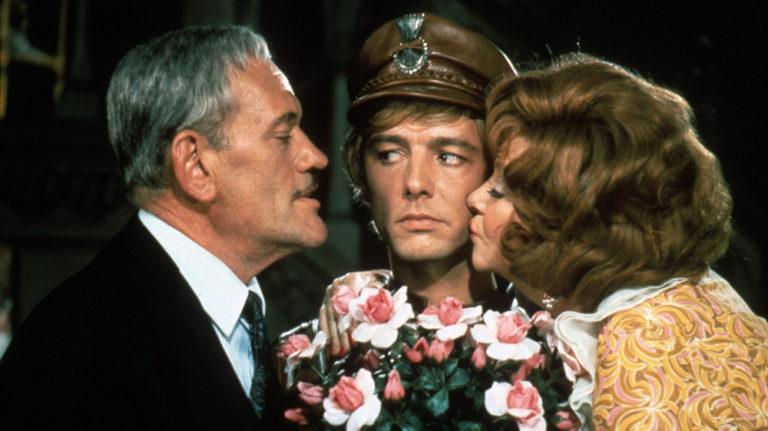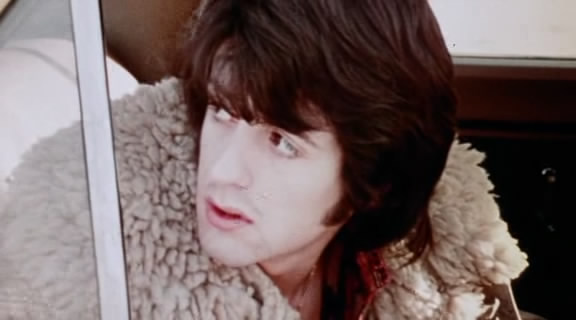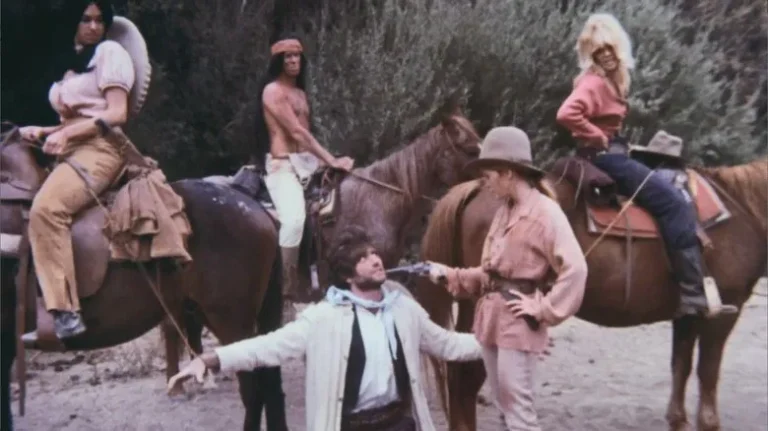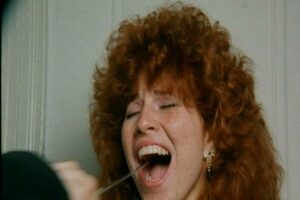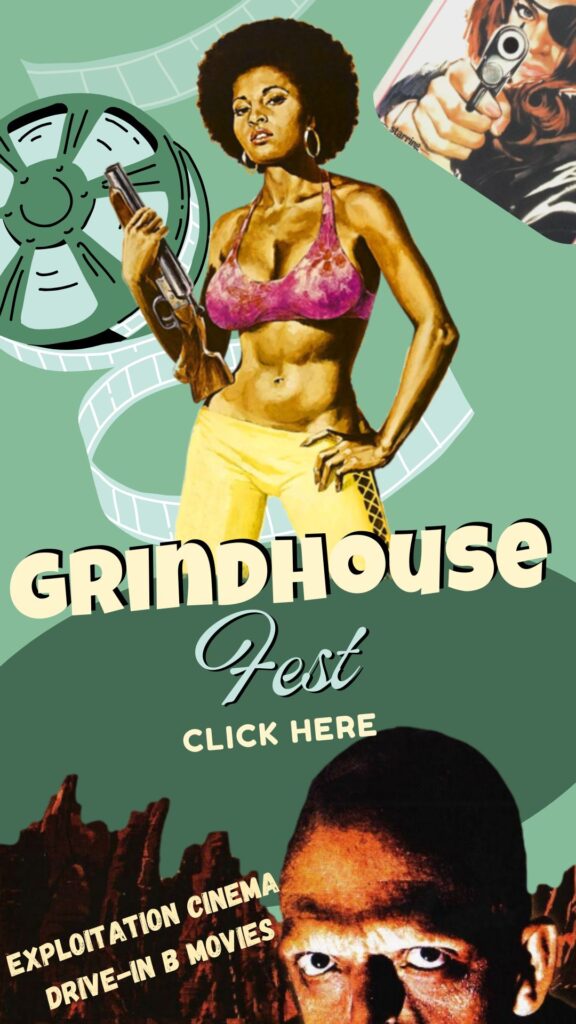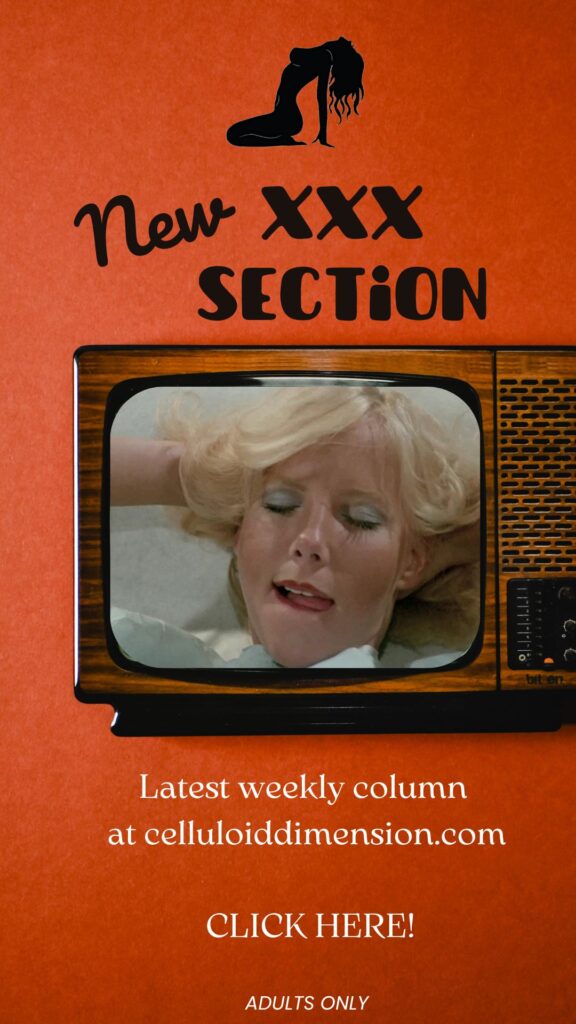Directed by Douglas Hickox
Written by Clive Exton
Starring:
- Peter McEnery as Mr. Sloane
- Beryl Reid as Kath
- Harry Andrews as Ed
- Alan Webb as Kemp (also referred to as “Dadda”)
Rating: ![]()
 All it takes to keep Mr. Sloane happy is a moldy house, a soft bed, and a full English in the morning. But don’t be fooled—domestic bliss comes with strings, especially when you’re a hot young crook with a past best left buried. Joe Orton’s delightfully unhinged play gets the film treatment it deserves, where Sloane (played with devilish charm by Peter McEnery) gets seduced, squeezed, and blackmailed into a twisted charade of suburban perversion.
All it takes to keep Mr. Sloane happy is a moldy house, a soft bed, and a full English in the morning. But don’t be fooled—domestic bliss comes with strings, especially when you’re a hot young crook with a past best left buried. Joe Orton’s delightfully unhinged play gets the film treatment it deserves, where Sloane (played with devilish charm by Peter McEnery) gets seduced, squeezed, and blackmailed into a twisted charade of suburban perversion.
It only takes Exton’s zesty wordplay and Hickox’s sinuous, eyebrow-raising camera to whip this story into a carnival of murder, lust, and gloriously spontaneous bisexuality. Kink drips from every frame, and for early ’70s Britain, it was positively scandalous. Orton’s decadent little threesome gets a film makeover full of lipstick, lechery, and glorious dysfunction. Beryl Raid is riotous as the man-hungry sister, Harry Andrews is all buttoned-up and twitchy as the brother with secrets, and Peter McEnery floats between them like a walking wet dream in tight trousers. Together, they turn sexual farce into an art form.
Sure, the setup’s familiar—three people screwing each other over (and maybe just screwing, period). But the real kink here isn’t in the sex; it’s in the tease. Hickox knows how to load a shot with more tension than a triple-X flick without ever showing anything dirty. A film that feels hornier than it looks—sleazy for the mind, classy for the eyes. Behind its polished lens, Sloane is less a film than a grin aimed at British decency. It knows it doesn’t need to be explicit—it just needs to look you dead in the eye while it teases. It’s clever, naturally, but also culturally loaded. A soft-voiced provocation dressed as a hangover, slouched in the ruins of Swinging London, wondering where all the flowers went.
Beyond its cultivated aesthetic and dramaturgical precision, Entertaining Mr. Sloane navigates a performative dialectic between heteronormative structure and queer destabilization. The tension between sexuality and respectability is its engine, yet those same polarities reveal its structural softness: as kitsch it is too composed; as erotic provocation, too contained. As an erotic comedy, it hesitates between exploitation and art performance; as farce, it strays too far into mannered polish. Hickox, previously so attuned to suggestion, allows his direction to falter precisely at the film’s terminal moment, the murder arriving like a foretold ritual, robbed of spontaneity and sting.
It never quite earns the thrill it promises. There’s a dark amusement in the way it treats emotional vacancy and casual malice, but the ending lands with a thud. Everything we’re shown in the final act was already whispered in the film’s beginning. In a world built on subtle glances and coded gestures, the final move feels too blunt. For a narrative tangled in power, desire, and deception, the close is curiously toothless. Entertaining Mr. Sloane wears its queer black humor with pride, but in the end, it’s the idea of radicalism—not its cinematic execution—that lingers. Its boldness lies in context, not completion.
